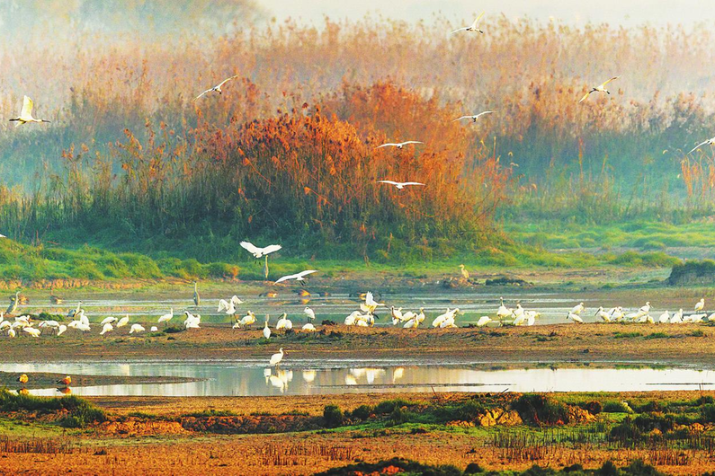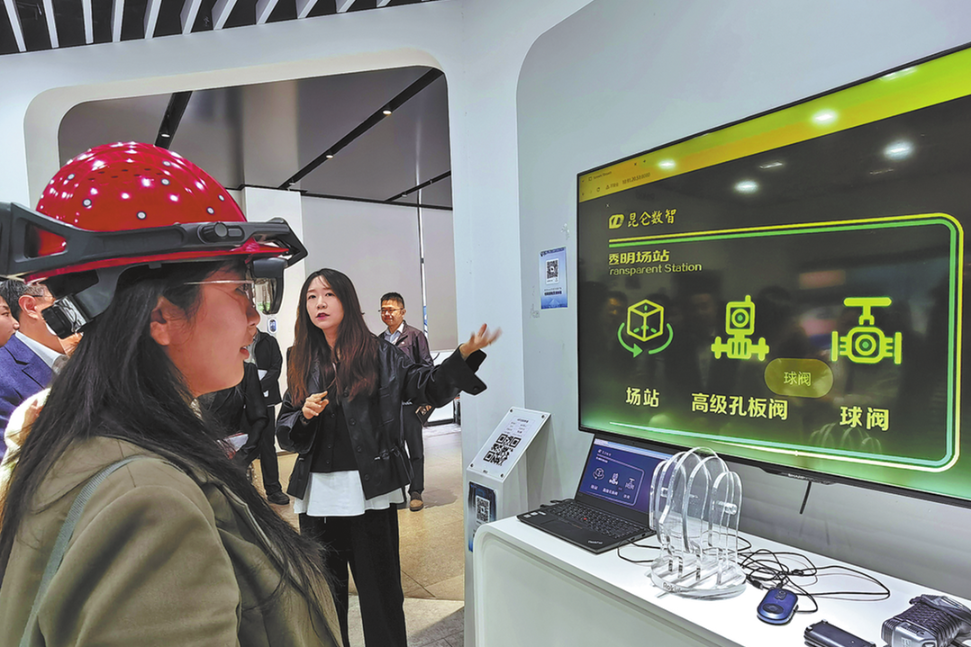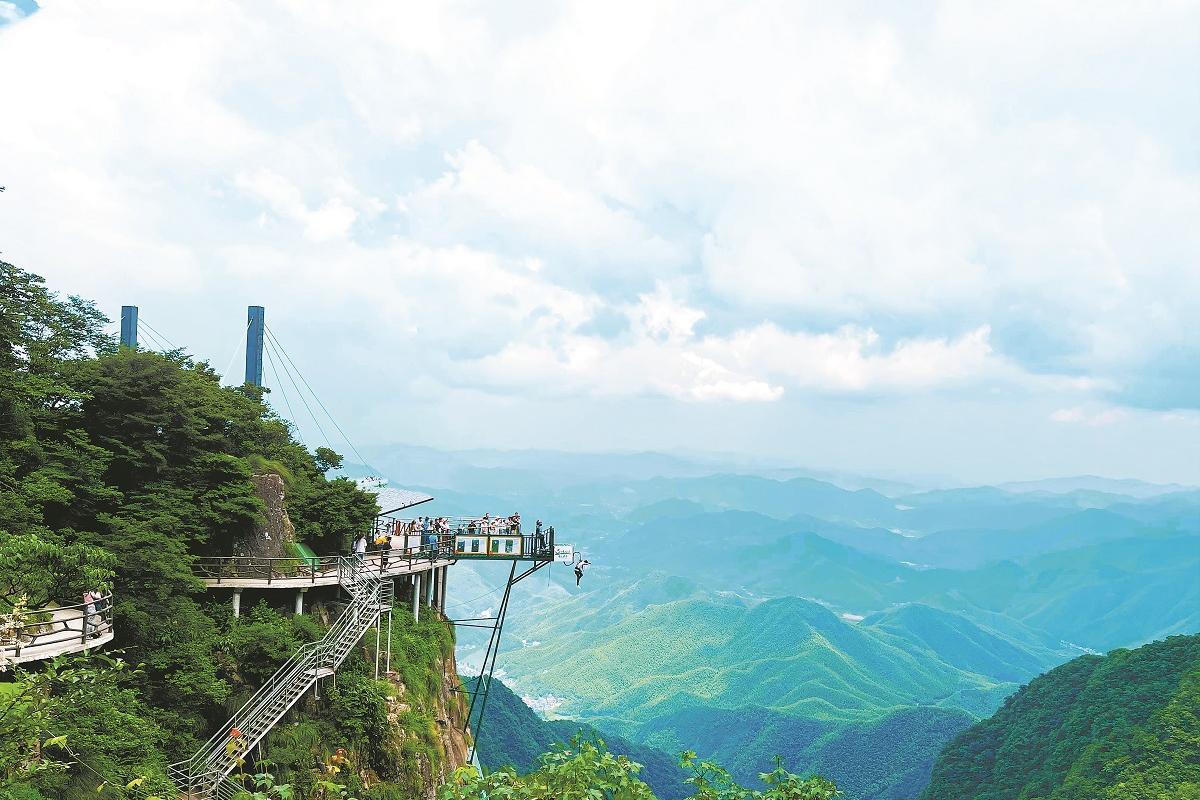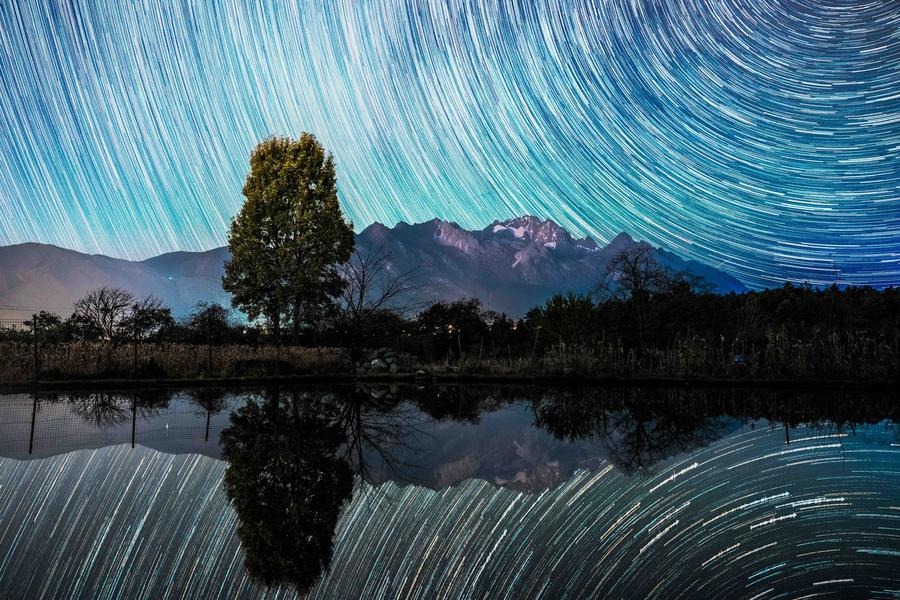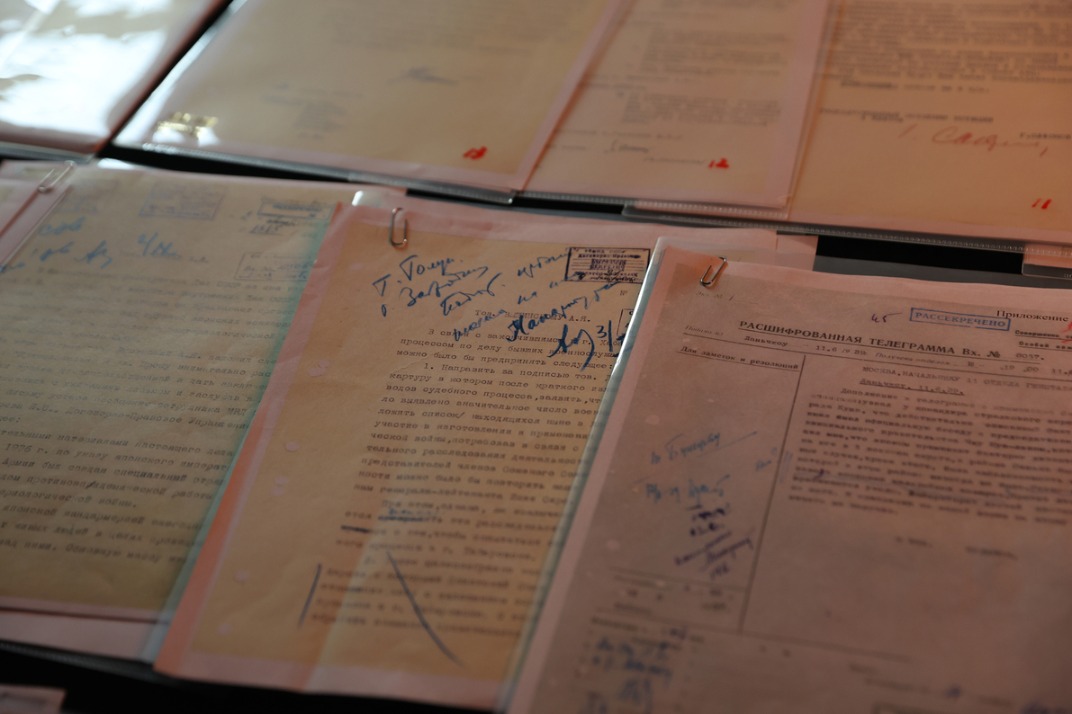Framing urban memories
A young photographer retraces China's millennium-era skylines, sparking collective nostalgia and optimism through architecture, Chen Meiling reports.


When Liu Yujia was a boy, lying on the grass during a picnic with his parents, a towering building with a spire caught his eye. That moment stayed with him.
"The blue felt full of vitality," he says.
Liu grew up in an industrial area about 10 kilometers from downtown Jilin, Jilin province. His happiest childhood memories are the rare occasions when his father would take him by bicycle into the city center to see its glittering skyline.
"Only when I got good grades would I get that reward. I still remember the dark brown windows, symbols of the luxury people dreamed of. Those buildings held everything I hoped for."
Now 24, Liu channels that early fascination into a unique passion. He has visited about 210 cities across 29 provinces photographing buildings from the 1980s to 2010s, becoming an influential blogger on Xiaohongshu, or RedNote, a popular Chinese lifestyle-sharing platform. Using the handle Tiehe West Street East, he has gained 160,000 followers.
His photos highlight signature elements of the era such as colorful glass curtain walls, geometric windows, signal-tower spires, and flying saucer-shaped revolving restaurants.
To him, the boldness and experimentation of that period, often incorporating science fiction-inspired elements, reflected a shared belief in a better future.
Liu grew up during China's fastest period of transformation. The country joined the World Trade Organization in 2001, hosted the Beijing Olympics in 2008, and staged the Shanghai World Expo in 2010.
But as skylines continue to rise, the once-modern buildings of his childhood are now overshadowed, and Liu says many young people feel more anxious than inspired.
Through his work, he hopes to revive the spirit of "striving and moving forward" embodied by those older structures.
Heritage chronicler
On his RedNote homepage, Liu describes himself as a "documenter of millennium-era architectural heritage" and says his goal is to "record everyone's hometown".
His journey started in the Dongshi commercial district of downtown Jilin. This was once the busiest region surrounded by several landmark skyscrapers from the 1990s and filled with numerous small commodity and clothing wholesale markets.
The area hummed with DJ music and weekend crowds at the peak of the brick-and-mortar era. Through Liu's lens, that energy is preserved, even as newer districts replace it.
He spent most of his spare time in middle school taking photos around Jilin. After finishing the national college entrance exam, his parents bought him a camera — one he used so intensely that it broke three years later. "I must have taken 500,000, maybe even 800,000 photos," he says.
His formal project began in May 2023, during his third year studying architecture at China University of Mining and Technology (Beijing). With a new camera, he began traveling alone to search for millennium-era buildings, usually in city centers and commercial hubs.
To save money, he stays in the cheapest youth hostels and eats street food, spending about 60 yuan ($8.4) a day. Sometimes fans join him, and together they find buildings from their shared memories.
"Every time my photos resonate with netizens, it heals me," he says. Among his photos, his favorite is a white-brick building in Zhuozhou, Hebei province, with blue windows and exterior spiral staircases, like something from an animation or a dream.
The city that impressed him the most was Benxi in Liaoning province, a coal-producing area whose 1980s boom gave rise to high-rises scattered across a sloped landscape.
Sanmenxia in Henan province, Baoji in Shaanxi province, and Huangshi in Hubei province also left deep marks. These cities, he says, have largely avoided large-scale development. Their aging buildings, unchanged for more than a decade, feel like time is standing still.
A lover of art, Liu dreams of "a nomadic lifestyle — free from workplace pressure, where I can do what I love purely out of passion". He hopes to visit more cities and eventually stage solo exhibitions of his work.
Dream core
For Liu, photographing buildings is a way of "finding means to look back on my childhood". What draws him is a sense of "outdated futurism" that newer architecture lacks.
"It may be outdated, but it is definite," he says. That era was full of optimism, when people believed in progress and embraced innovation. "It is nostalgia for the past, but also anticipation for the future."
One follower commented below his photos: "Thank you for bringing me back to the time I most want to return to. For a moment, I can see my carefree childhood and feel a world where romance meets reality."
Liu believes nostalgia is shared widely among those born after 2000.
Du Chenyu, 23, a fan, says the millenniumera buildings — now often regarded as landmarks — stand out in cities where recent construction feels standardized and commercialized. "That's why I love them," he says.
His hometown, Langzhong in Sichuan province, is full of such architecture. One of Liu's photos reminded him of a bus station from his childhood that has since been demolished.
Zhang Weiyi, 21, another fan, says the aesthetics of those buildings are still striking. "Postmodern high-rises and residential blocks with decorative window grilles featured playful colors and shapes — like children's drawings. Compared to today's 'glass bead' office towers, they have depth and warmth," she says. "They witnessed a generation's childhood and naturally trigger memories."
Liu tags many of his photos with three keywords: architecture, urban memories, and dream core, a popular concept among post-2000s. It refers to a surreal, nostalgic online visual style designed to evoke dreamlike feelings.
Chinese-style dream core often features blue glass windows, aluminum frames, tiled walls, green electric fans and enamel cups, objects once common in everyday life.
As Liu says, the post-2000s generation is the first in history to document and revisit its own childhood digitally, making them particularly sensitive to old photos and nostalgic memories shared online.
Du says Chinese-style dream core also reflects a stage of the country's development. "Every generation has collective memories tied to childhood objects," he says, adding that they should be properly preserved to create new business opportunities.
Spiritual refuge
Dou Donghui, an associate professor at the School of Sociology and Psychology at the Central University of Finance and Economics in Beijing, says the renewed affection for millennium-era architecture reflects a shared yearning among young people for certainty, warmth, and hope, and more importantly, "a spiritual haven from anxiety, a way to connect with others, and distance themselves from mainstream aesthetics".
These buildings evoke what many remember as a golden age. As iconic products of China's rapid urbanization, these buildings are backdrops of young people's growth and micro-carriers of the broader story of "national prosperity and improved family life". Today, they function as cultural symbols of optimism and a predictable future, he says.
This nostalgia, he adds, has psychological value. By photographing or viewing such buildings, young people experience a form of time travel, an inexpensive escape into a simple childhood.
The architecture also satisfies younger generations' search for alternative aesthetics. With their unusual shapes — imaginative yet slightly awkward — the buildings embody an era's dream of "modernization" and "internationalization", representing what Dou calls a "naive futurism" (once prevalent in the Soviet Union and Eastern European socialist countries).
Zhao Jixin, vice-president of the Architectural Design Branch of Tsinghua Tongheng Urban Planning and Design Institute in Beijing, says the iconic visuals of the period stemmed from early attempts to imitate Western modernism and postmodernism.
For example, the colored windows were originally a practical response to technical limitations — coated films were needed to improve insulation.
Every era creates its own visual markers. That doesn't mean today's buildings lack artistic merit, she says. "The lollipops we ate as children seem the sweetest because we remember how they felt."
Liu Mingtai in Changchun contributed to this story.









Today's Top News
- Death toll rises to 16 in Sydney's Bondi Beach shooting
- Firm stance on opening-up wins praise
- World looks to new engines for growth in 2026
- Evidence mounts of Japan's wartime atrocities
- Gunmen kill 11, wound many on Sydney beach
- Study finds Earth's deep water reservoirs

















